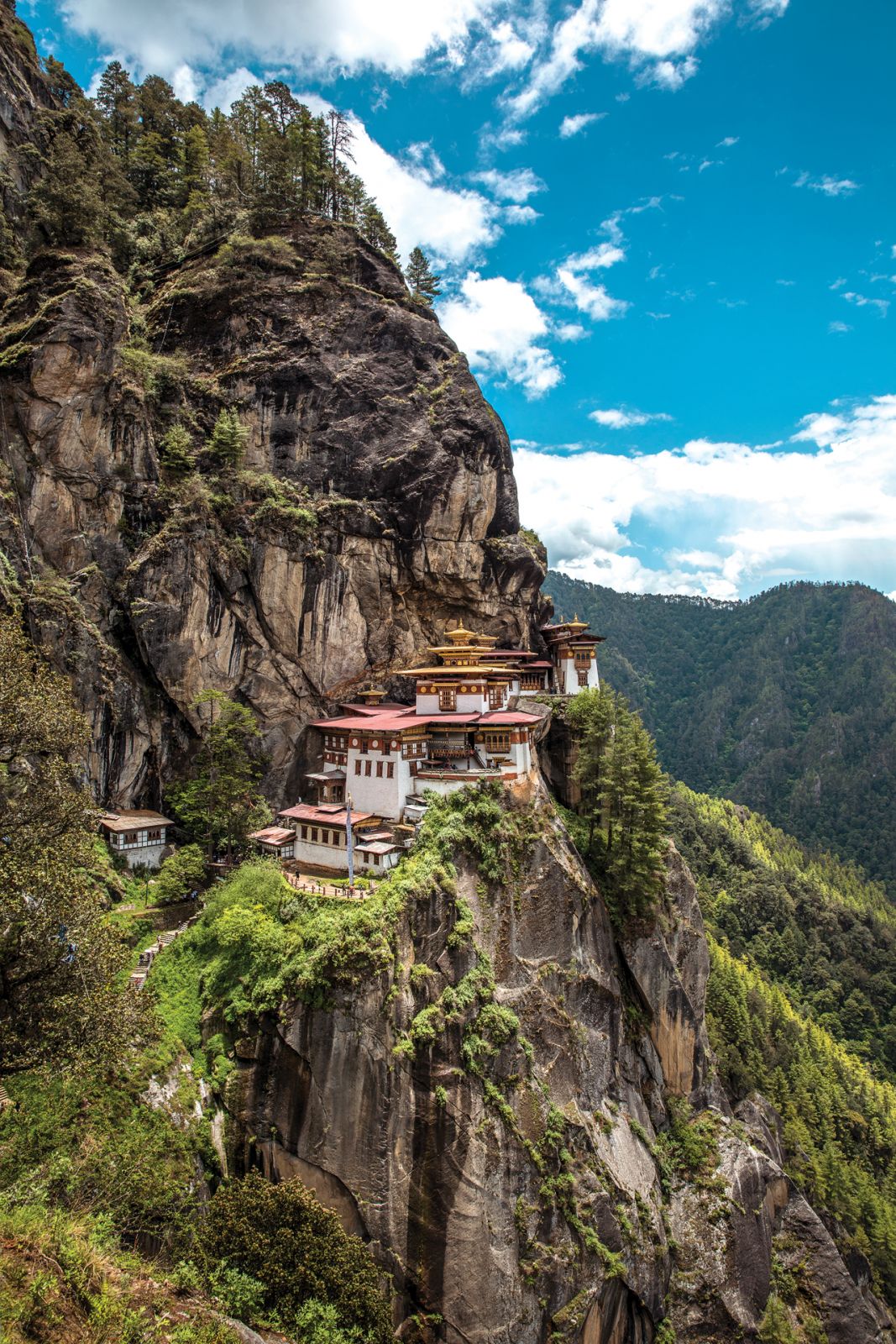Without sacrificing the luxury experience, sustainability is at the core of Bhutan’s tourism industry
Golden lakhangs, inhabited by solemnly chanting monks and timeless sacred relics, perch precariously on cliffs, like bridges between the earth and the heavens. Majestic, centuries-old dzhongs stand proudly, perpetually pulsating with activity, remaining a testament to a rich culture and a history that endure in the modern era. A palpable spirituality vibrates across the land as colourful prayer flags flutter in the wind, carrying auspicious wishes and good intentions across the verdant valleys of Bhutan.
Few countries in the world are as mysterious as the Land of the Thunder Dragon. Nestled in the Himalayas, with sprawling Indian plains to the south and the mountainous Tibetan region in the north, this peaceful kingdom is an elusive destination for many travellers. And intentionally so.
Read also: Sustainable tourism advocate Hindy Weber embarks on an eco-centric journey to the Himalayas

“To the people of Bhutan, tourism is much more than just the realisation of revenue and receipts,” said Dorji Dhradhul, director general of the Tourism Council of Bhutan. “Our tourism approach aims to enhance Gross National Happiness at the local level on the one hand, and create awareness of the importance and potential of sustainable development at the global level on the other hand.”
Best described as the index by which Bhutan measures the country and its population’s collective wellbeing, Gross National Happiness or GNH was instituted by the government in the 2008 Constitution. It is the foundation of all of Bhutan’s policymaking.
Read also: Sa Pa, Vietnam: why you should add this foodie destination to your bucket list





